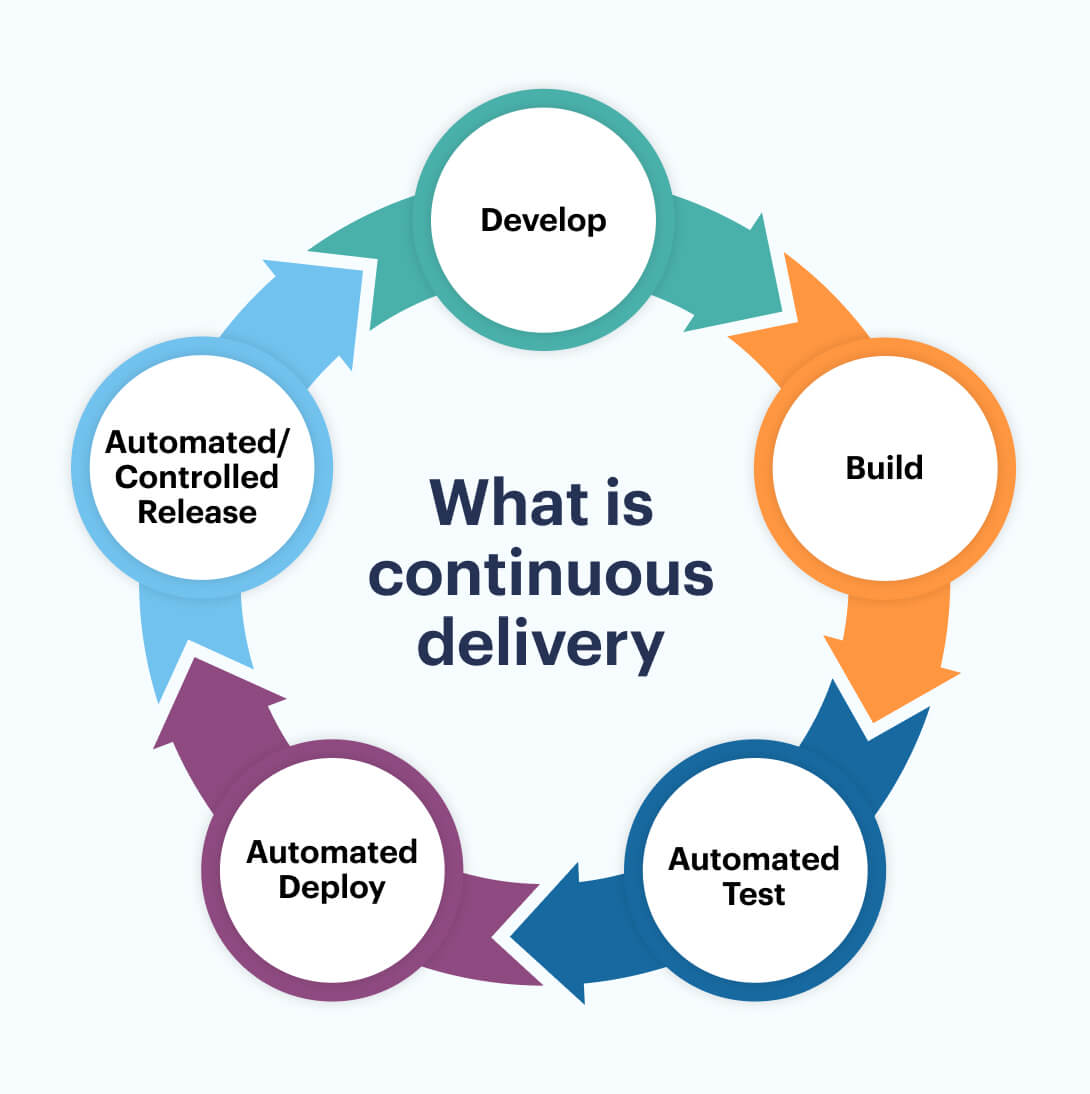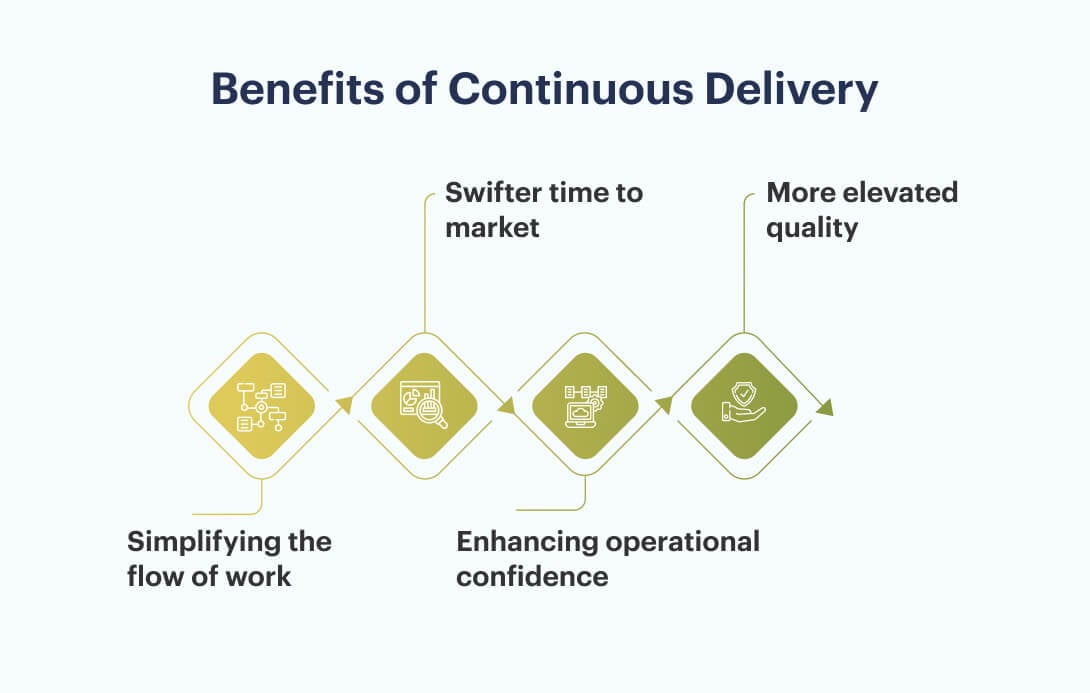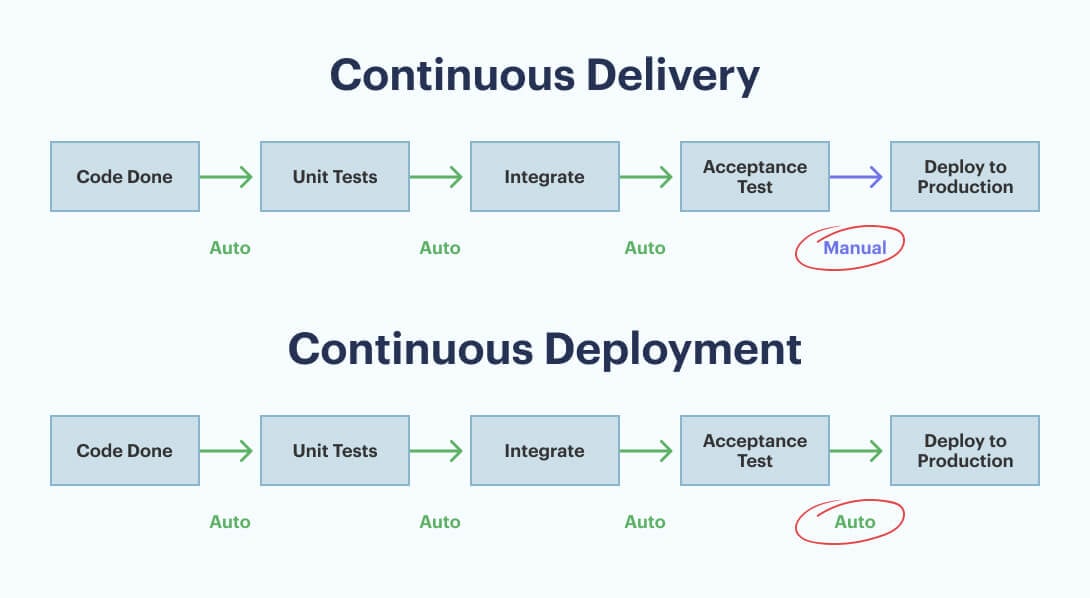We live in an app-centric world. Apps drive more and more of our personal, social, and professional lives. Whether it’s talking with friends on social media, ordering movie tickets on your phone, or planning a business trip using an airline app. This service digitalization has come. Companies that recognize this shift have a unique chance to leapfrog their competitors, attract clients faster, and increase revenue.
It has always been a point of concern that what is continuous delivery? Continuous delivery is a software development approach that accelerates the deployment of new code by automating the process. It builds a method for automating the push of a developer’s modifications to an app to a code repository or container registry.
What is continuous delivery

What is continuous delivery in DevOps? Continuous delivery refers to building, testing, configuring, and deploying software from a development environment to a production environment. A release pipeline automates infrastructure building and deployment of a new build by combining multiple testing or staging environments. Successive environments support Longer-running integration, load, and user acceptability testing activities. The CD method begins with continuous integration, and the pipeline stages each succeeding domain to the next after victorious fulfillment of tests.
Benefits of continuous delivery

Here is the list of some of the most popular benefits of continuous delivery –
Simplifying the flow of work
Workflows are streamlined with the help of continuous delivery. It improves efficiency and benefits in the resolution of DevOps issues. Automated processes ensure that activities are executed in the same manner every time. You can also quickly tweak your workflows to fit specific needs. Leading companies use automated workflows to speed up operations. This improves DevOps’ return on investment. You’ll see an increase in productivity and revenue.
Faster time to market
The integration and test/fix phases of a standard phased software delivery lifecycle might take weeks or even months to complete. When you are releasing smaller features then it may get completed quickly with this approach and there is no need to wait till everything gets completed. It also evades the significant quantities of rework that a staged approach entails. Developers may incorporate integration and regression testing into their daily work and eliminate these phases when teams collaborate to automate the build and deployment, environment provisioning, and regression testing procedures.
More elevated quality
Developers may concentrate their actions on user research and higher-level testing tasks like exploratory, usability, and performance and security testing when automated tools detect regressions in minutes. These operations can be carried out continuously throughout the delivery procedure by establishing a deployment pipeline, ensuring that quality is incorporated into goods and services from the start.
Enhancing operational confidence
Operational confidence, regulatory compliance, and service levels benefit from continuous delivery. This boosts the return on investment (ROI). Every moment, tasks are accomplished efficiently and actively. Consider the example of automated monitoring solutions that can provide real-time alerts to workers. This comprises problems such as security and bad user experience. Automated debugging tools can quickly identify issues and help in their resolution. This also assists in regulatory compliance. When specific circumstances appear, automated monitoring tools can generate real-time notifications.
Continuous delivery vs. Continuous deployment

Below-defined is the brief description of continuous delivery vs. continuous deployment –
Continuous delivery
- A software engineering practice that involves preparing code changes for production deployment.
- Makes complete surety on frequent releases.
- Assures that releases are concluded into smaller parts.
- Permits for immediate reactions to flaws.
- Improves the stability, dependability, and controllability of releases.
- Organizations that seek to roll out new features and releases regularly.
- The deployment must be automated using continuous delivery methods.
- Test automation is used to determine whether or not the software fits the exit criteria.
Continuous deployment
- A software engineering practice assures that code updates are released into production regularly.
- Ensures each deployment stage is completed quickly and reliably.
- Automate the entire process by eliminating manual procedures.
- Enables teams to build an entirely automated continuous integration/continuous delivery pipeline.
- Organizations that release new features on a daily and hourly basis. Ensure cross-department coordination (development, support, marketing, business, etc.) is maintained.
- Companies that release new features regularly like based on daily and hourly. Ensure that cross-departmental cooperation is maintained, i.e., development, support, marketing, business, and more.
- The ability to automate production feature rollback should also be examined.
Conclusion
When it is about continuous delivery, you get out of it what you put into it, just like most things in life. DevOps teams must go above and beyond to build and maintain a successful continuous delivery pipeline. This entails internalizing the DevOps culture, including a desire to test, eliminate overhead, embrace automation, and adopt a learning attitude. The above blog explains it all about continuous delivery.








